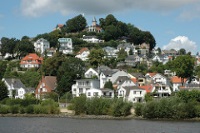
This quaint town on the steep Elbe hillside was once a fishing village favoured by retired ship captains. Today it has become popular with locals as a weekend excursion from Hamburg. Foreign visitors also throng the narrow alleys between picturesque houses packed together on the cliffside. The village offers an abundance of cafes and restaurants where patrons can relax and watch ships steaming in and out of the harbour, and there are more than half a dozen pretty parks in which to spend a few hours on a nice day. The stunning views from the river-facing portions of Blankenese have resulted in many beautiful homes and hotels being built on the steep hillside, much of which is inaccessible to cars and has tiny pedestrian-only streets which are very charming - there are also 4,864 stairs. There are two lighthouses on Blankenese. Other attractions include a Roman garden, a doll museum and numerous parks and walking trails.There is a ferry service to Blankenese from St Pauli-Landungsbrucken in Hamburg's Free Port and the Blankenese waterfront is serviced by various other water shuttles as well. There are many buoys in the river to help guide all sizes of watercraft, since this part of the river has many sandbars and is subject to tidal shifts.
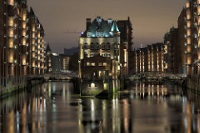
The world's oldest warehouse complex, built of red brick with Gothic gables and turrets, is a century old and still in use for storing exotic goods from around the world, like tea, cocoa, silk and oriental carpets. Known as the Speicherstadt in German, this historic section of the Free Port between the Deichtorhallen and Baumwall has been turned into a tourist attraction by the addition of an open air theatre, spice museum, miniature exhibition and an old Russian submarine open for exploration as well as a few other little museums and some regular art exhibitions. Another popular attraction in Speicherstadt is the 'Hamburg Dungeon', an interactive museum showcasing the more unpleasant and gory aspects of the city's history.Just wandering through the narrow cobblestone streets and exploring the small waterways lined by old warehouses is fun, and taking a boat out into the harbour is also a treat. The Speicherstadt is illuminated at night by light shows which create an enchanting spectacle, particularly viewed from a boat on a harbour night tour. The harbour has played a huge role in Hamburg's identity and history and exploring this area is insightful.
Hamburg's premier art gallery offers the chance to view works across the time spectrum from the Middle Ages through to the present day. The Kunsthalle's main aim is to educate about art, rather than showcase particular art treasures (although treasures abound), and exhibitions are constantly changing to introduce new forms of art to the public. The museum now actually occupies two buildings. The Galerie der Gegenwart, a modern structure, exhibits the modern and contemporary art. The famous old building, a feature in its own right, showcases the older works, most of which date back to the 14th, 16th and 17th centuries. There are several cafes in the gallery, including a bistro with a nice view of the Binnenalster. Seeing everything in this gallery will probably only take about two hours if you don't dawdle but there are lovely spots to sketch and write which may prolong the visit.
Address : Glockengießerwall
Website : www.hamburger-kunsthalle.de
Transport : U-Bahn - Take the U1, U2 or U3 to Hauptbahnhof; Bus - Take the 112 bus to the stop Hamburger Kunsthalle
Opening times : 10am - 6pm Tuesday to Sunday. 10am - 9pm on Thursday. Closed on Monday.
Admission : €14 for adults (€8 after 5.30pm). Free for children under 17.
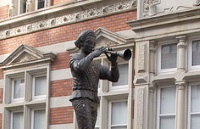
Hameln, the famous town of the Pied Piper tale told to children around the world, is a popular tourist destination in Lower Saxony, northern Germany, lying beside the River Weser. The old town centre has been reconstructed with several Renaissance buildings, and some wood-frame historic buildings, all adding to the fairy-tale atmosphere that brings alive the legend of the piper who offered to rid the town of rats, and ended up stealing all the children. A short musical version of the story is performed each Wednesday in the old town between May and September at about 4.30pm, and the Pied Piper himself conducts tours around the town.Most of the tourist attractions in Hameln are close together, so it's easy to see everything on foot, before enjoying a meal at one of the town's many cafes and beer gardens. The main attraction of the village is its old-world fairy-tale appeal and the feeling that you have stepped back in time. Hameln also hosts a popular Christmas market from late November through December which is a great place to do some shopping for those back home. The town in situated in beautiful mountainous scenery, on the river, and is a great base for excursions out into the countryside.
Website : www.hameln.de
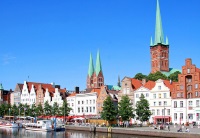
Lübeck lies 41 miles (66km) northeast of Hamburg, close to the Baltic coast. Not only is this historic town the home of a couple of noted Nobel Prize winners, but as a living monument to the wealthy Hanseatic merchants of the 13th century it sports some architectural treasures that have ensured its status as a UNESCO World Heritage Site. The town's famous sons are Willy Brandt, the West German chancellor who won the Nobel Peace Prize in 1971, and Thomas Mann, whose novel Buddenbrooks won the Nobel Prize for Literature in 1929. As far as the architecture goes, the town is known for its steeples and spires, high-gabled houses, strong towers and massive gates.The town is also billed as the world capital of marzipan, having been the spot where this delightful confection was first devised (there is a legend attached, of course). Samples of marzipan are freely available in Lübeck, along with tastes of wine from the region. There are also some great cafes and restaurants to enjoy in this beautiful town which feels quite unlike any other. If you only have time for a quick visit spend a few hours strolling the Lübeck Altstadt (Old Town) where many of the most striking buildings are gathered.
Website : www.luebeck-tourism.de
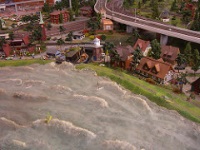
Train enthusiasts will love Miniature Wonderland in Hamburg, but so will almost everybody else. With more than 4,000 square metres of floor space, there is much to see with tiny models of various regions, both local and international. The largest of its kind in the world and the most visited permanent exhibit in Northern Germany, there are 900 trains with 12,000 carriages, as well as 300,000 lights, 200,000 trees and 200,000 human figures. Sections include Southern Germany and the Austrian Alps, Hamburg and the Coast, America, Scandinavia, and Switzerland. There is so much detail in the model world that you can examine it for hours and never get bored - some of the scenarios are very amusing and the little people are portrayed doing all sorts of things.The place is very popular for people of all ages and it can get a bit crowded inside, especially in the peak summer months. It is best to book your ticket in advance online to avoid waiting.
Address : Kehrwieder 4 Block D
Website : www.miniatur-wunderland.com
Transport : U-Bahn - U3 to Baumwall or U1 to Messberg
Opening times : 9.30am - 6pm daily
Admission : €15 for adults; €7.50 for children under 16
The Hamburg Museum gives a detailed description of the city of Hamburg from the 8th through to the 20th centuries. Scale models have been used to illustrate the changing shape of the city's famous harbour. Exhibits also include reconstructions of various typical rooms, such as the hall of a 17th-century merchant's home to an air raid shelter from World War II. Actual features from old buildings have been moved into the museum creating an exciting architectural space. The museum is housed in an impressive building crowned by a tower designed to look like a lighthouse and dating back to 1922 when the museum opened. It was built on part of the former fortifications of the town of Hamburg, details of which can be found inside. The gorgeous central courtyard has recently been covered with a glass ceiling and the space is now used for exhibitions, concerts and other events. To see what's on when you're visiting check the website.
Address : Holstenwall 24
Website : www.hamburgmuseum.de
Transport : U-Bahn - U3 (St. Pauli); Bus 112 - stop “Museum für Hamburgische Geschichte”
Opening times : 10am - 5pm Tuesday to Saturday; 10am - 6pm Sunday; closed on Monday
Admission : €9.50 for general admission
In the middle of Hamburg is an oasis of green lawns and trees, with colourful flowers and fountains providing a lovely backdrop to relax in. You can stroll around the Japanese garden and enjoy the tropical flower collections and teahouse. It is easy to find a pretty spot to have a picnic or read a book as the gardens are extensive and full of little nooks. Children will enjoy the range of attractions including playgrounds, pony rides, miniature golf, and a roller rink and ice skating rink. There are also concerts and theatrical performances on a regular basis - check the website for details on what will be happening during your visit. In the summer months there are evening concerts with light shows at the fountains which are wonderful to attend. The park is also beautiful in autumn and spring though, when the colours are spectacular. As the park is right in the heart of Hamburg it is very easy to access as an area to allow the kids to blow off some steam and for the whole family to take a break from the city and traditional sightseeing. If you're looking for an open area to do some jogging or walking Planten un Blomen is ideal.
Website : plantenunblomen.hamburg.de
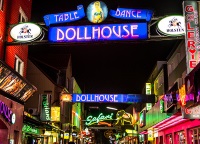
Hamburg's notorious red light district, to the east of the city centre in the St Pauli zone, has become one of its greatest tourist attractions. The Reeperbahn (Rope Street) is where rope used to be produced for the ships in the harbour. It is now a half-mile long street which, along with its cross-streets, is filled with bright lights and flirtatious prostitutes, crammed with bars and establishments offering erotic entertainment. The Reeperbahn became the neighbourhood where sailors of old were encouraged to seek entertainment after they were banned from invading the city's more respectable areas in the 19th century. The district also boasts an Erotic Art Museum (at Nobistor 10A), which is privately owned and restricted to persons over 16. The Beatles used to play in a club in the area which is now a Pizza Hut and there is a tribute to them called the Beatlesplatz where there are aluminium silhouettes of the band as they looked when they played in Hamburg.Although the district is extremely popular it will not delight everyone and you should not visit if you are offended by prostitution. It is better to explore on foot because parking is very expensive and hard to come by. There is a possibility of petty crime in the area so travellers should remain vigilant.
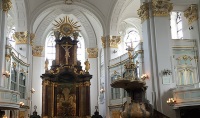
St Michaelis began as a humble little church, which was extended in 1600. In 1647 construction began on the grand building that stands today as possibly Hamburg's most recognisable landmark. Like many important buildings in Germany, the church suffered major damage in World War II. Michaeliskirche offers tours of the 270 foot (82m) tower; the crypt, which contains the bodies of Johann Mattheson and Carl Philipp Emanuel Bach; and an interesting presentation on the history of Hamburg including a film. The tower has a magnificent viewing platform which can be reached either by elevator or by climbing the 452 steps. The advantage of taking the steps is that you get to see the bells and the famous clock machinery on your way up, but it is quite a climb.As the church is still an active place of worship it is closed to visitors during services and events and at all times tourists are expected to show respect. There is a small chapel on the side that is almost always open for prayer and contemplation.
Address : Englische Planke 1a
Website : www.st-michaelis.de
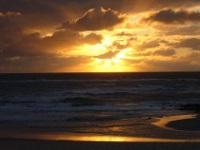
The island of Sylt is Germany's most northern point, lying off the northwestern coast in the North Sea. The island boasts some lovely sandy beaches and stunning views, and its main town, Westerland, has become a popular seaside resort. Other sought-after villages are Kampen and Wenningstedt-Braderup. In recent years Sylt has become the seaside destination of choice for the German rich and famous and celebrity spotting is a regular activity for some tourists. The island has miles of bicycle paths meandering through pine forests and is a popular place for horse riding too.Sylt offers plenty of entertainment for tourists, including shops, spas and exclusive restaurants. There are also a number of golf courses. The Ellenbogen Nature Reserve is a lovely area for walking and there are two lighthouses to explore as well as wonderful dunes. Although most visitors come to enjoy the beaches and outdoor activities in pretty Sylt, other popular tourist attractions include the Sylt Aquarium, which is a good place to take children, and the small but historically interesting Saint Severin Church. Sylt is easy to get to and trains arrive several times a day from Hamburg. The island is connected to the mainland by the six-mile (10km) Hindenburgdamm Bridge.

Travel Guide powered by Word Travels, copyright © 2023 Globe Media Ltd. By its very nature information in this travel guide is subject to change at short notice and travellers are urged to verify information on which they're relying with the relevant authorities. Neither Globe Media Ltd nor Travel Vogue can accept any responsibility for any loss or inconvenience to any person as a result of information contained above.